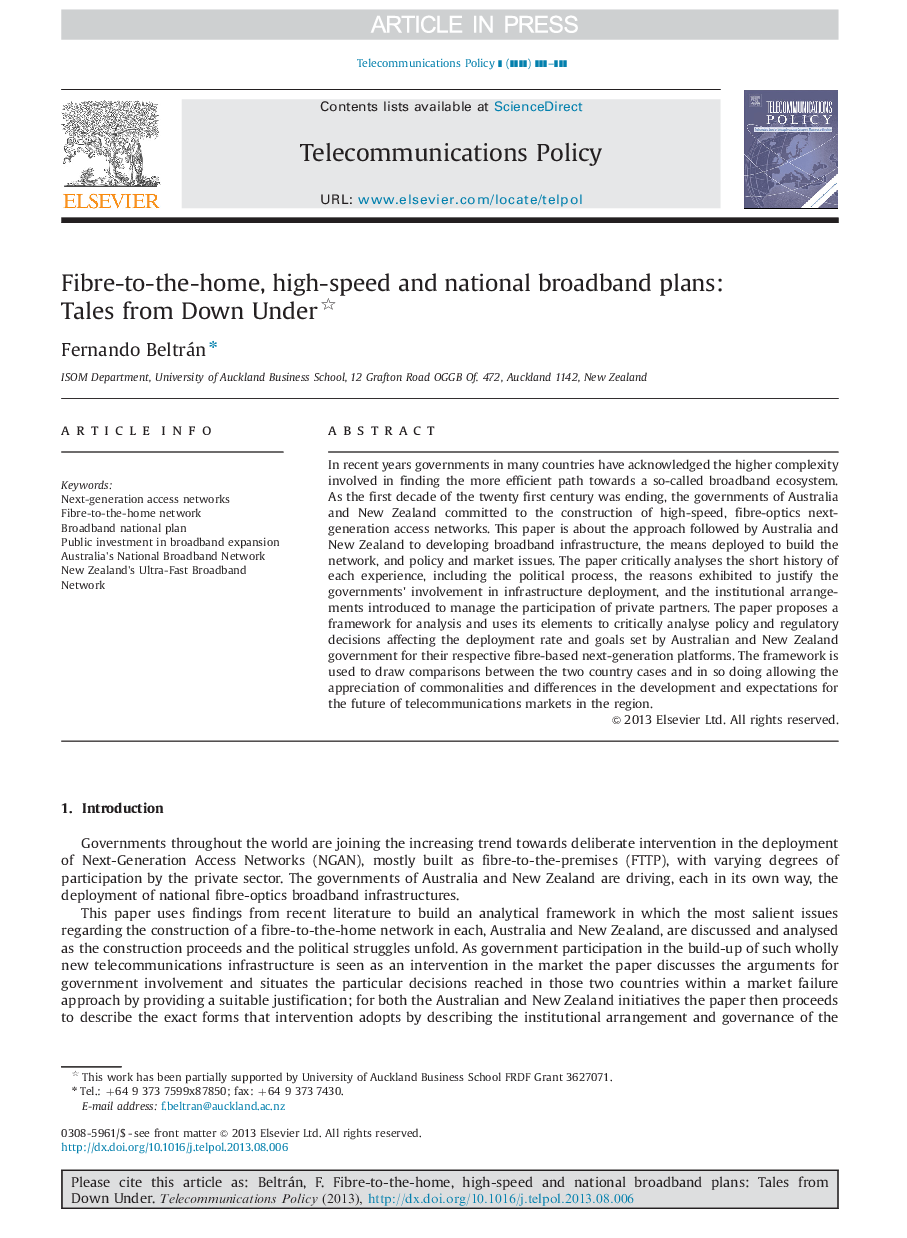| Article ID | Journal | Published Year | Pages | File Type |
|---|---|---|---|---|
| 6950410 | Telecommunications Policy | 2014 | 15 Pages |
Abstract
In recent years governments in many countries have acknowledged the higher complexity involved in finding the more efficient path towards a so-called broadband ecosystem. As the first decade of the twenty first century was ending, the governments of Australia and New Zealand committed to the construction of high-speed, fibre-optics next-generation access networks. This paper is about the approach followed by Australia and New Zealand to developing broadband infrastructure, the means deployed to build the network, and policy and market issues. The paper critically analyses the short history of each experience, including the political process, the reasons exhibited to justify the governments' involvement in infrastructure deployment, and the institutional arrangements introduced to manage the participation of private partners. The paper proposes a framework for analysis and uses its elements to critically analyse policy and regulatory decisions affecting the deployment rate and goals set by Australian and New Zealand government for their respective fibre-based next-generation platforms. The framework is used to draw comparisons between the two country cases and in so doing allowing the appreciation of commonalities and differences in the development and expectations for the future of telecommunications markets in the region.
Related Topics
Physical Sciences and Engineering
Computer Science
Information Systems
Authors
Fernando Beltrán,
